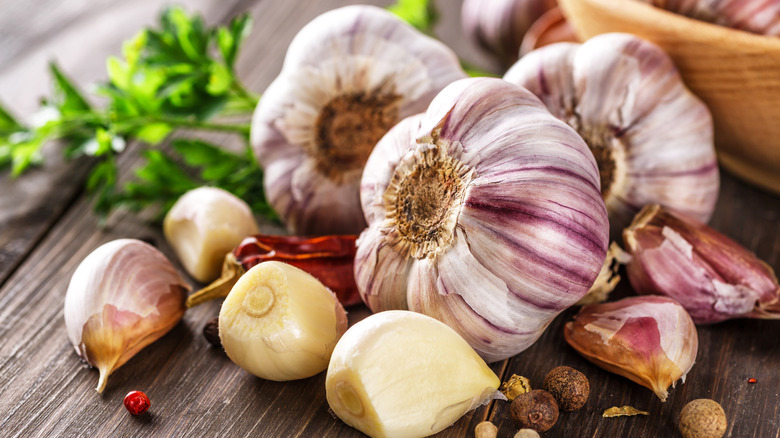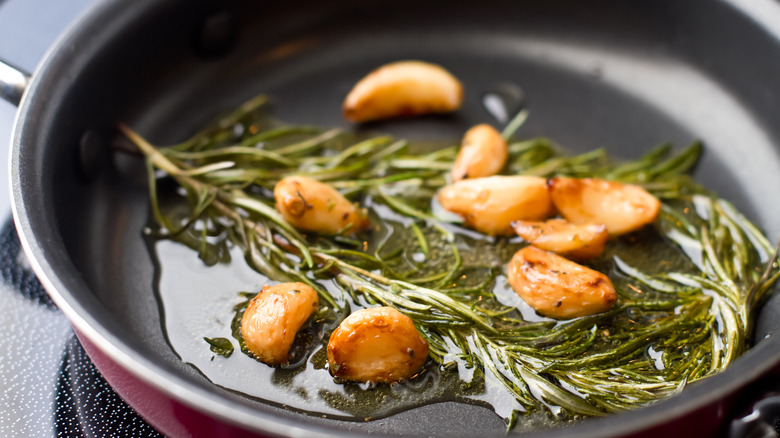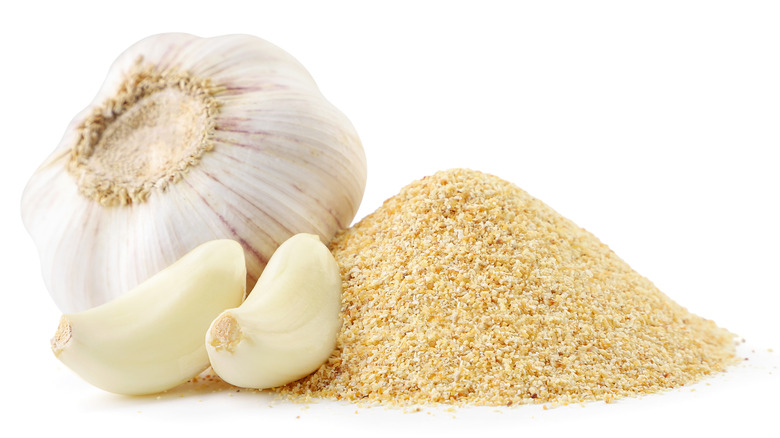Make One Easy Switch To Avoid Burning Fresh Garlic Forever
Fresh garlic cooking in oil is as irresistible as it is vital to many dishes. Whether making scampi, stir-fry, or a classic steak, countless recipes involve cooking garlic in fat, usually alongside onion, ginger, or other aromatics. But one critical mistake that chefs of all levels tend to make is adding the garlic to the heat too early.
While the smell of garlic wafting through the kitchen throughout the cooking process is one of the perks of cooking at home, holding off on adding the garlic until the end of cooking will save it from becoming burned, charred, and bitter. Fresh garlic contains less moisture than other commonly used vegetables, meaning it will burn faster when heated. The goal is to toast or caramelize the garlic rather than blacken it because, as the sugars within the garlic burn and break down, they create a bitter taste that will overpower the dish. Try adding your garlic to the pan in the last few minutes of cooking next time to see what difference it can make.
Benefits of adding fresh garlic last
Garlic's complex flavor can inject a sharp punch or bolster richness. As garlic is heated, its flavor grows more complex, becoming less harsh and more sweet and nutty. Raw garlic is relatively odorless and flavorless — until cut. According to a 2014 review from the Molecules journal, garlic's cells contain an amino acid known as alliin, and its cell walls house an enzyme known as alliinase. When garlic is cut or crushed, and the cell walls are destroyed, the alliin and alliinase form a compound known as allicin, which produces garlic's signature odor and sharp flavor. As garlic is cooked, allicin is broken down and destroyed, easing that sharpness.
In recipes starring large amounts of garlic such as James Beard's garlic soup, it's better to let the cloves just barely start to brown to gain a subtle sweetness while maintaining that expected pungency. However, in a dish like crispy turkey and cheese croquettes where garlic is just a helping hand rather than the star of the show, letting the flavor of the garlic develop will help elevate the richness of the dish without overpowering it.
Sometimes a mellow taste is best, but keep in mind that the longer you cook garlic, the more likely it is to burn, which could spell disaster for your dish. Adding in fresh garlic toward the end is the best way to control how long it cooks, so you can get the right level of garlic flavor without burning.
What about other types of garlic?
While fresh garlic cloves have enhanced recipes (and kept vampires away) for centuries, convenience is king in modern cooking, leading to endless aisles of garlic powders, salts, pastes, and more lining store shelves. Some recipes specifically call for these products, and in a pinch, you can always substitute fresh garlic, but it's good to know when to use garlic powder over fresh cloves.
Garlic powder benefits from being added toward the middle of cooking, allowing you to judge how powerful you want the garlic taste to be but also letting the powder fully infuse into the dish. But it's also useful before cooking in some cases — like when creating an aromatic marinade or rub for meats. Additionally, you can use it in cooking when very high heat is necessary — such as when blackening – where fresh garlic would quickly burn.
Jarred or minced garlic in water tends to have less allicin than fresh, sometimes a little as half as much, meaning its pungency is greatly reduced. Because of this, it is especially important to add this toward the end of cooking so that you don't lose too much flavor as it heats up.



